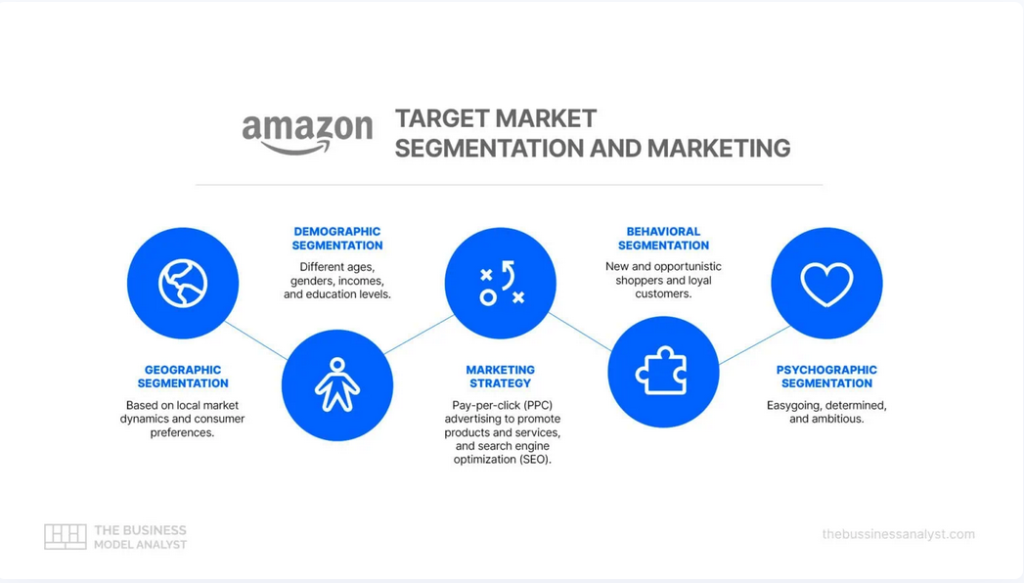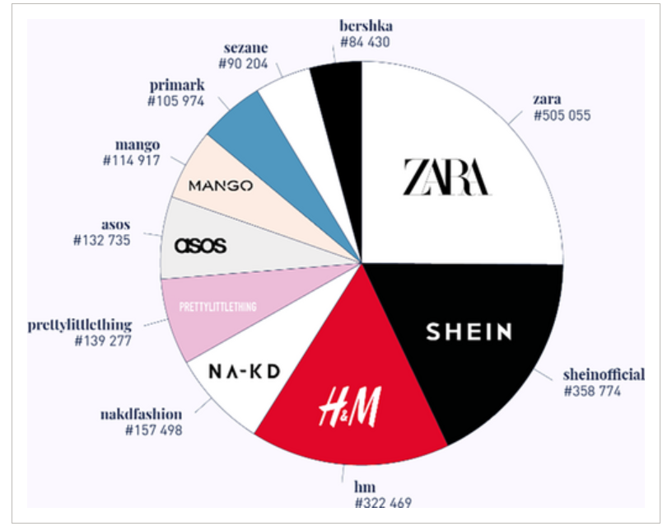- Home
- Fundamentals of Email Marketing
- What Is a Target Market? 2025 ...

✨ Key takeaways
⭐ Understanding target market improves message relevance, engagement, and conversions.
⭐ Core characteristics of target market are demographics, location, lifestyle, and buying behavior.
⭐ Effective email targeting relies on segmentation, personalization, optimized send time, and A/B testing.
⭐ Generic messaging lowers visibility and performance; targeted content makes emails impactful.
The more precisely you understand your audience, the better you can speak to their needs, wants, and expectations. That’s what makes the concept of a target market so powerful. It helps brands craft messages that feel personal, relevant, and compelling to the right people at the right time.
In this article, we’ll look into the target market definition, why it’s so important, and how to apply it in your campaigns using real-life examples from some of the leading brands.
What Is a Target Market?
I like the saying, “If you’re trying to please everyone, you’re pleasing no one.” It’s like screaming into the void—no one will hear you, and it definitely does not work in marketing. So, in order to be heard, you need to be specific—in the products and services you produce and with people you are targeting with them. In other words, you need target marketing in order to be successful.
So, what is a target market? A target market is a specific group of people most likely to be interested in your product or service. These are the customers who actually need what you offer—whether they realize it or not. When you truly understand your audience, your brand message resonates on the same wavelength. By doing so, you address your customers’ values, which is much more efficient than throwing generic ads at random people and hoping for the best.
Why it is important to understand your target market
Think of your business as a restaurant. If you’re serving gourmet sushi, you wouldn’t waste your marketing budget promoting it to people who hate seafood. Instead, you’d focus on different target markets — maybe foodies, health-conscious consumers, or even travelers looking for an authentic experience.
By understanding your target market, you can achieve the following:
✅ Spend less money marketing to the wrong people.
✅ Increase conversions by speaking to the right audience.
✅ Build a stronger brand that connects with loyal customers.
Key components of a target market
A well-defined target market possesses clearly defined characteristics that are based on, but not limited to, the following aspects:
🔹 Demographics: The basics
This includes age, gender, income, education, occupation, and family status. A luxury skincare brand, for instance, might focus on professional women aged 30–50 with higher disposable income.
🔹 Geographics: Where they are
Are your customers local, national, or global? Do they live in urban areas or small towns? By clearly understanding your customers’ geographics, you can better define their needs.
🔹 Psychographics: The mindset
Psychographics dig deeper into values, interests, and lifestyles. People’s persuasions guide their choices. So, as a sustainable fashion brand, you’d rather target eco-conscious shoppers who prioritize ethical consumption and are ready to pay a premium for goods that have no or minimal environmental footprint.
🔹 Behavioral patterns: How they buy
How do your customers make decisions? What influences them? Do they shop online or prefer in-store experiences? Do they buy impulsively or only during sales? Understanding customers behavioral patterns enables you to tailor your marketing strategy in a way that gives them exactly what they look for.
Real-World Examples of Target Markets
Amazon
Amazon dominates the e-commerce space by offering convenience, affordability, and product variety that counts on billions of items. Its core market positioning revolves around fast delivery, competitive pricing, and a convenient shopping experience—defining traits of the company. With millions of daily transactions, Amazon caters to a vast audience, but its primary focus is on digital-first, budget-conscious, and convenience-driven consumers.
Amazon’s target market includes:
⭐ Busy professionals who prioritize efficiency and rely on Amazon’s one-click shopping options and same-day delivery.
⭐ Tech-savvy shoppers who embrace e-commerce, voice assistants (Alexa), and subscription-based shopping (Amazon Prime).
⭐ Families and parents looking for household essentials, groceries, and baby products at competitive prices.
⭐ Small business owners who use Amazon Marketplace to sell products or purchase bulk supplies.
⭐ Bargain hunters drawn to daily deals, flash sales, and personalized recommendations.

Amazon keeps customers returning by offering smart, seamless shopping. From AI-driven recommendations that seem to know what you need before you do to nonstop deals, they make sure that every customer has a reason to come back for more.
L’Oréal
L’Oréal is a global leader in the beauty industry that is known for its wide variety of high-quality skincare and haircare products and cosmetics. Their brand positioning focuses on innovation, inclusivity, and affordability, making beauty accessible to different demographics. While L’Oréal caters to a broad audience, it strategically targets beauty-conscious and trend-driven consumers who prioritize quality over generic drugstore products.
Largest beauty manufacturers worldwide by revenue in 2023

L’Oréal’s target market includes:
⭐ Beauty enthusiasts who actively follow makeup trends and skincare routines.
⭐ Young professionals and working women who want premium beauty products at affordable prices.
⭐ Consumers focused on self-care who see skincare and haircare as part of their daily wellness routine.
⭐ Eco-conscious shoppers drawn to L’Oréal’s commitment to sustainability and cruelty-free products.
⭐ Multi-generational consumers, from Gen Z experimenting with makeup to mature women looking for anti-aging solutions.
L’Oréal’s marketing strategy leverages influencer collaborations, social media campaigns, and scientific innovation to position itself as a brand that delivers both luxury and accessibility.
Four pillars of L’Oréal inclusivity strategy

Zara
Zara is one of the most influential fashion retailers. It is known for fast fashion, which is blamed for huge negative environmental impact. Nonetheless, for those less concerned with sustainability, Zara offers trendy designs and affordable pricing. Their target market positioning is centered around luxury-inspired fashion that is affordable to the masses.
Zara’s target market includes:
⭐ Fashion-forward young adults (typically 18–35) who keep up with trends but want affordability.
⭐ Urban professionals looking for stylish, work-friendly outfits without high designer price tags.
⭐ Students and budget-conscious shoppers who want chic, high-quality clothing without overspending.
⭐ Frequent shoppers who value Zara’s rapid release of new collections every few weeks.
⭐ Social media-conscious consumers who look for Instagram-worthy outfits and fashion inspiration.
The top 10 brands mentioned by influencers in 2023

Zara’s marketing strategy is less about flashy ads and more on what really matters to its customers: speed and fashion. In the end, the chain is capable of bringing a garment from design to the store in just 15 days! Their agile supply chain lets them drop fresh collections every few weeks, keeping fashion-forward shoppers hooked and always coming back for more.
Target Marketing for Email Campaigns
In order to know what to say and how to say it, you first of all need to know whom you are talking to. Let’s face it: someone adherent to sustainability practices needs a very different message than the one digging through discount bins in fast fashion retail stores. When you recognize these different target markets, you can adjust your email content in a way that speaks your audience language.
That’s the essence of target marketing—you make sure your emails don’t just land in inboxes but actually make an impact on the people reading them. Because being generic does not bring you more clients, what it does is make you invisible. The opposite is equally right—when you create a campaign that is catered for an audience with specific tastes and backgrounds, that’s when you get noticed and appreciated.
Let’s take tone as an example. A brand selling high-end skincare to professionals in their 30s and 40s wouldn’t use the same voice as a Gen Z beauty brand hyping up its latest drop on TikTok. One relies on credibility, expertise, and results. The other? Fun, snappy, and trend-driven. Same industry—completely different approaches. So, if you want to be heard, you need to tune in your target auditorium vibe.
And then there’s timing. A last-minute deal on concert tickets won’t do much good for planners who map out their schedules weeks in advance. But for spontaneous buyers? That “One Night Only” email might be exactly what gets them to click. Understanding not just who your audience is but how they behave is what turns an email into a useful—and even awaited—message.
Best Practices for Tailoring Email Campaigns to Your Target Market
Audience segmentation
Not all subscribers are the same, so don’t treat them as such. Break your audience into segments based on demographics, buying behavior, engagement level, or interests. A first-time visitor and a loyal VIP customer should never receive identical messaging.
Personalization tactics
Use dynamic content, past purchases, and browsing history to create emails that feel tailor-made. The ways are plenty: using their first name, recommending products they’ll love, or sending exclusive offers based on their preferences. Whatever it is, with the right personalization, you only win!
Timing & frequency
Too many emails? You’re annoying. Too few? You’re forgotten. The key is to match your audience’s habits—early risers get their emails with their morning coffee, night owls see them when they’re most active. Same goes for timing—if you pick the wrong slots for your audience, the result will be the same—decreasing involvement.
A/B testing
Never assume—test everything. Subject lines, calls to action, send times, even the placement of images can impact your results. A/B testing helps you to actually see what works best for each target market. And this is your chance to bring your emails from guesswork to data-driven success.
To Sum Up
In this article, we tried to understand what a target market is. The most important takeaway from this article is that the target market isn’t just important—it is absolutely crucial for any successful marketing campaign. Target market examples, even from the biggest, most recognizable brands, show that they don’t market to everyone.
Instead, they craft their strategies around the people who matter most to their business. In the end, every effective target marketing strategy comes down to one thing: truly understanding your audience. The more you know about them—their needs, desires, habits, and challenges—the better you can shape your campaigns to connect, engage, and drive real results.



